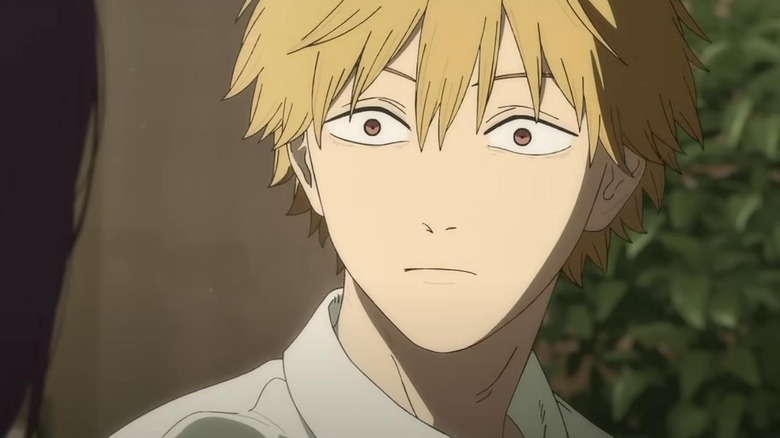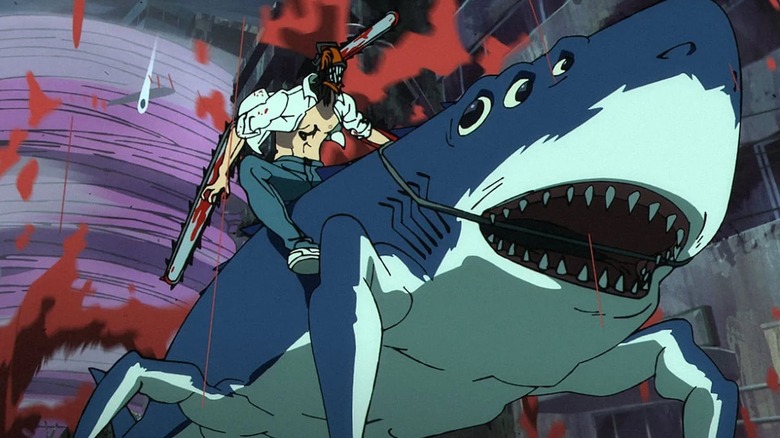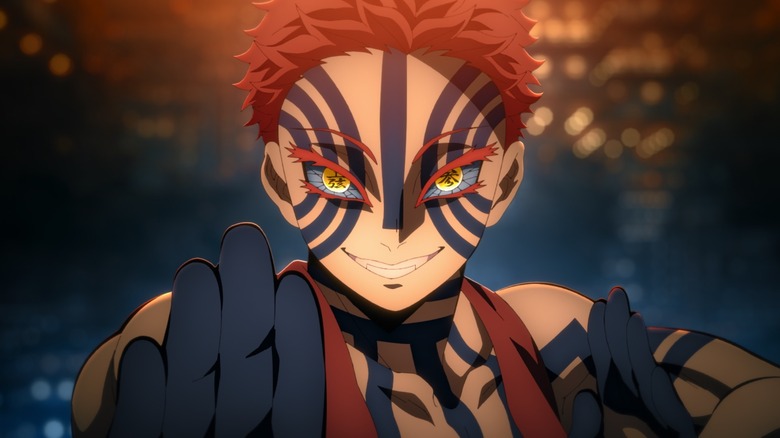Chainsaw Man And Demon Slayer Are Doing The Exact Same Thing Right Now, But Does It Work?
Theatrical movies based on small-screen animes have been around for as long as anime itself. "Astro Boy," widely considered the foundation for what we now call anime, started as a TV show in 1963 and got a theatrically-released movie in 1964 (which compiled three episodes of the show into a feature-length film). Indeed, most popular anime series eventually give rise to a theatrical feature or two (or two dozen-plus, in the case of "Pokémon").
These movies tend to be standalone, non-canonical filler stories that are completely unconnected to the anime's ongoing narrative and are designed to be understood and enjoyed by general audiences — really, they're excuses for action and fan service not normally seen in the original show. Lately, however, there's been a new trend we're calling the "anime arc movie." These films are direct adaptations of the anime's original source material and often feature a story arc that would be too short for a 12-episode series. In the case of "Demon Slayer: Kimetsu no Yaiba — The Movie: Mugen Train," it became one of the most successful movies of 2020 and helped keep theaters alive during the COVID-19 lockdowns.
Since then, this trend has exploded in popularity. "Demon Slayer" is currently concluding its story with a trilogy of money-printing movies, "Haikyu!!" is finishing its own story with a two-part film, "Jujutsu Kaisen" adapted a prequel comic into a feature-length movie linked to the main anime, and "Attack on Titan" essentially got a two-and-a-half-hour-long film split in two to air on television. (It was also released in theaters to great success.) Now, 2025 has brought us both the first "Demon Slayer" movie, titled "Infinity Castle," and the "Chainsaw Man" film "Reze Arc." But while these films obviously make a ludicrous amount of money, are they a good idea, creatively-speaking?
Chainsaw Man – The Movie: Reze Arc delivers a more complete story
Where "Infinity Castle" is the start of a trilogy-long conclusion to the "Demon Slayer" story, "Reze Arc" adapts a smaller, earlier arc in the "Chainsaw Man" narrative. At the same time, both movies bring a popular TV anime to the big screen in the hopes of attracting new followers while also pleasing established fans.
The biggest issue with these films is that they are, by their very nature, the middle chapters of incomplete stories. The difference is that "Infinity Castle" picks up right after the "Demon Slayer" anime's most recent season finale while providing little to no context. Even "The Lord of the Rings: The Two Towers," itself a middle chapter in a larger story, had a recap at the start to help bring viewers up to speed and better understand what's actually going on (and who its various characters are).
"Reze Arc," on the other hand, makes for a better standalone movie since it adapts a complete story arc — one without huge repercussions for the overarching plot of "Chainsaw Man" — and doesn't deal with the bigger developments from the anime's first season. No, this doesn't mean newcomers can simply jump, seeing as the film absolutely assumes you not only watched the anime's first season, but also remember its characters and their motivations and relationships. Nevertheless, the movie devotes most of its runtime to a romantic story that's entirely new and not from the "Chainsaw Man" anime, meaning it offers a beginning, middle, and end independent of whether you watched the show or not. Thus, "Reze Arc" works better as a singular film because it does what anime movies are meant to do: deliver a shorter story in a shorter runtime so it doesn't overstay its welcome.
This anime movie trend is bad for storytelling, but good for business
"Chainsaw Man — The Movie: Reze Arc" does a lot of things right. It features the feel-bad romance of 2025, along with some great action and a nuanced storyline that allows its main character to grow. Still, its biggest problems all stem from the fact that it's an anime arc movie.
For starters, by moving to the big screen and attempting to appeal to a bigger audience, the "Chainsaw Man" movie sacrifices some of the visual experimentation that made the original anime so good in the first place. Similarly, it and "Infinity Castle" are still adapting manga, i.e. stories that were published episodically. That translates better to the medium of TV, but when these stories are stitched together into a single feature film, their pacing suffers and the actual movies still feel like they're divided firmly into chapters. You can clearly see where the ad breaks would go and the episode end credits would fit throughout "Infinity Castle" — and given that "Mugen Train" was eventually repurposed as a TV series, it's likely "Infinity Castle" will end up becoming a season of TV anyway, which somewhat defeats the whole purpose.
Unfortunately, the genie's already out of the bottle, and there's no stopping this trend now. Films like "Infinity Castle" simply make too much money to ignore and do too good of a job encouraging fans to check them out in theaters as quickly as they can. All the same, these aren't spin-offs or reboots designed to boil down their source material to its essence in order to achieve mass appeal; they're continuations of the stories that fans are already following weekly on TV. To sacrifice that only takes away from what makes television and movies both unique and different.


